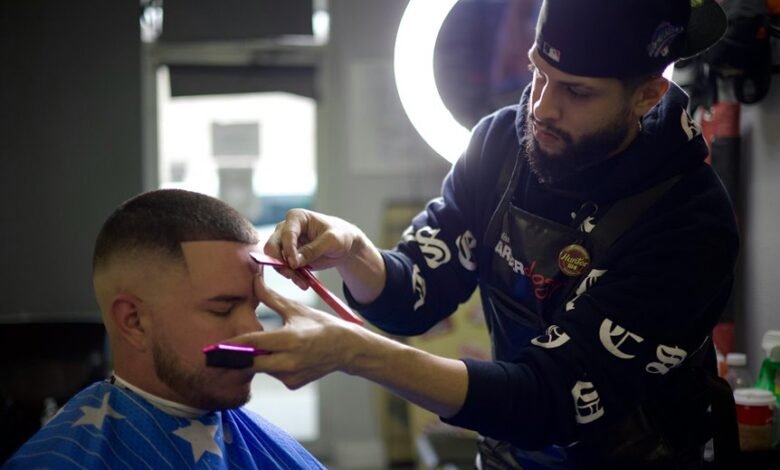Understanding Corte:C_Dl63yka8o=Low Fade

The low fade haircut, characterized by a gradual transition of hair length starting just above the ears, offers a refined aesthetic. This style not only enhances the contours of the head but also allows for diverse styling options on top. Understanding how to effectively communicate preferences to a barber, coupled with maintenance strategies, is crucial for achieving the desired look. Exploring these aspects provides insight into achieving a polished appearance that suits individual tastes.
What Is a Low Fade?
A low fade is a popular hairstyle characterized by a gradual transition in hair length, beginning just above the ears and tapering down towards the neckline.
This technique is a key aspect of fade styles, a category in haircut terminology.
The low fade offers versatility, allowing individuals to express personal style while maintaining a clean and polished appearance, appealing to those who value freedom in grooming.
How to Communicate Your Desired Low Fade to Your Barber
When discussing a low fade with a barber, it is crucial for individuals to articulate their preferences clearly to ensure the desired outcome.
Utilizing proper haircut terminology, clients should specify the exact fade styles they prefer, such as the height and blending techniques.
Visual references, like photos, can further enhance communication, aiding barbers in comprehending the client's vision for their low fade haircut.
Tips for Maintaining Your Low Fade Haircut
Regular maintenance is essential for preserving the sharp appearance of a low fade haircut.
To achieve this, individuals should utilize quality hair products tailored to their hair type, such as pomades or waxes for hold.
Employing effective styling techniques, like blow-drying or combing, can enhance the fade's definition.
Regular trims every four to six weeks ensure the fade remains crisp and well-defined, promoting an enduring, polished look.
Conclusion
In conclusion, mastering the low fade haircut is akin to fine-tuning a musical instrument; precision in communication and technique yields a harmonious result. Just as a violinist must regularly adjust their strings to maintain perfect pitch, so too must one engage in routine maintenance of their low fade for optimal appearance. By understanding the nuances of this style and implementing proper care, individuals can ensure that their low fade remains sharp and polished, reflecting their personal style effectively.





